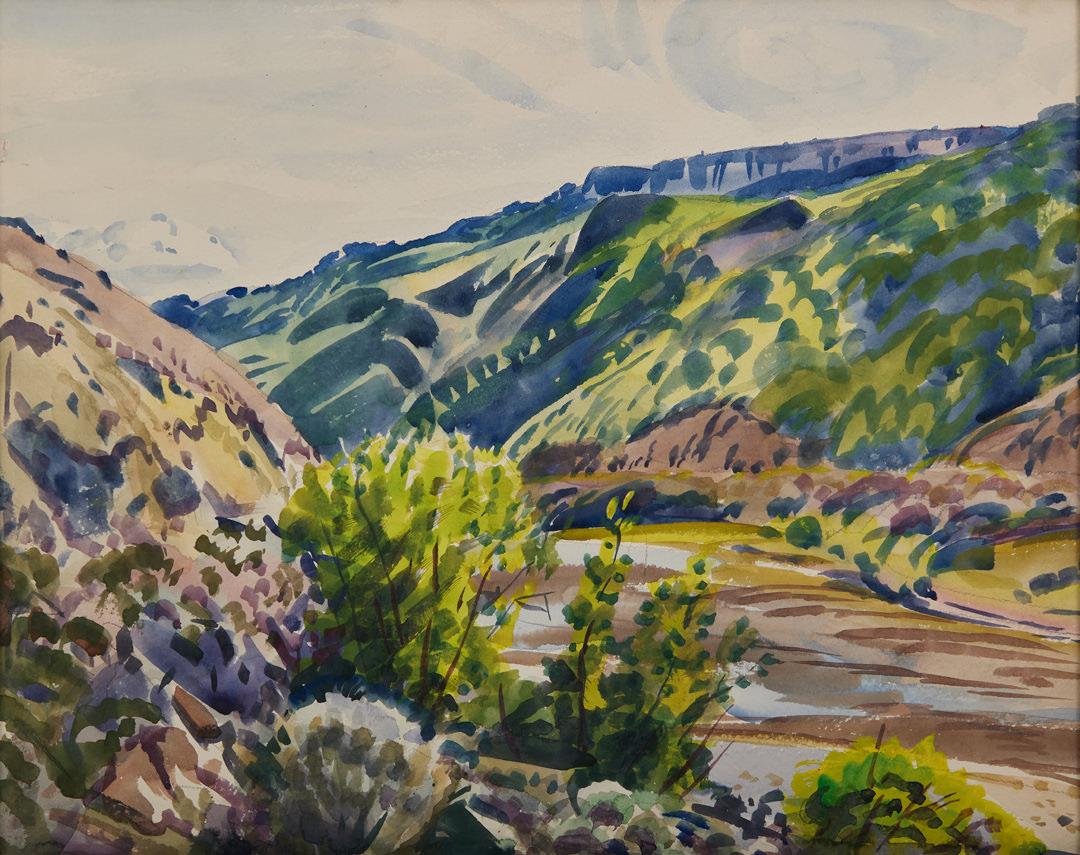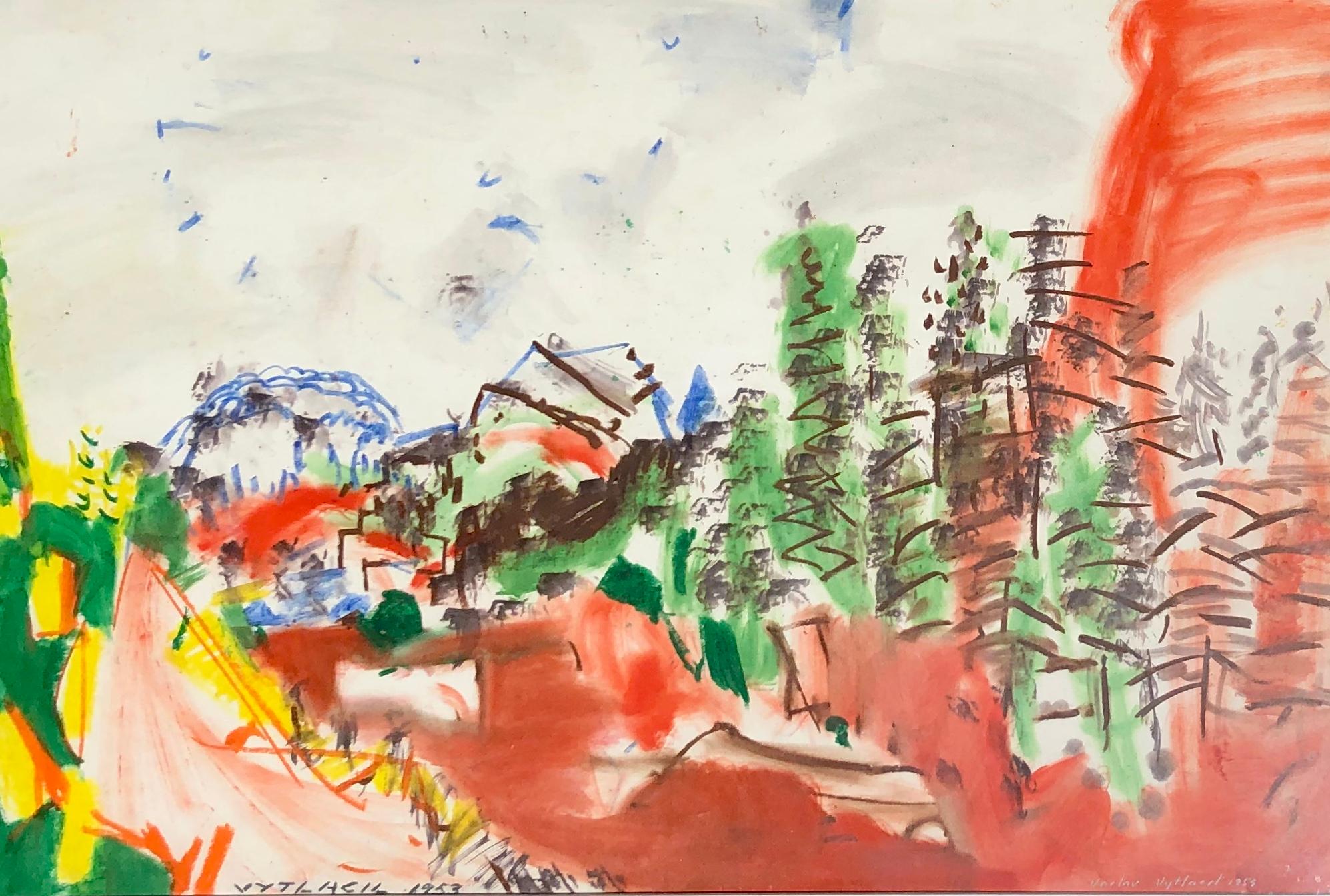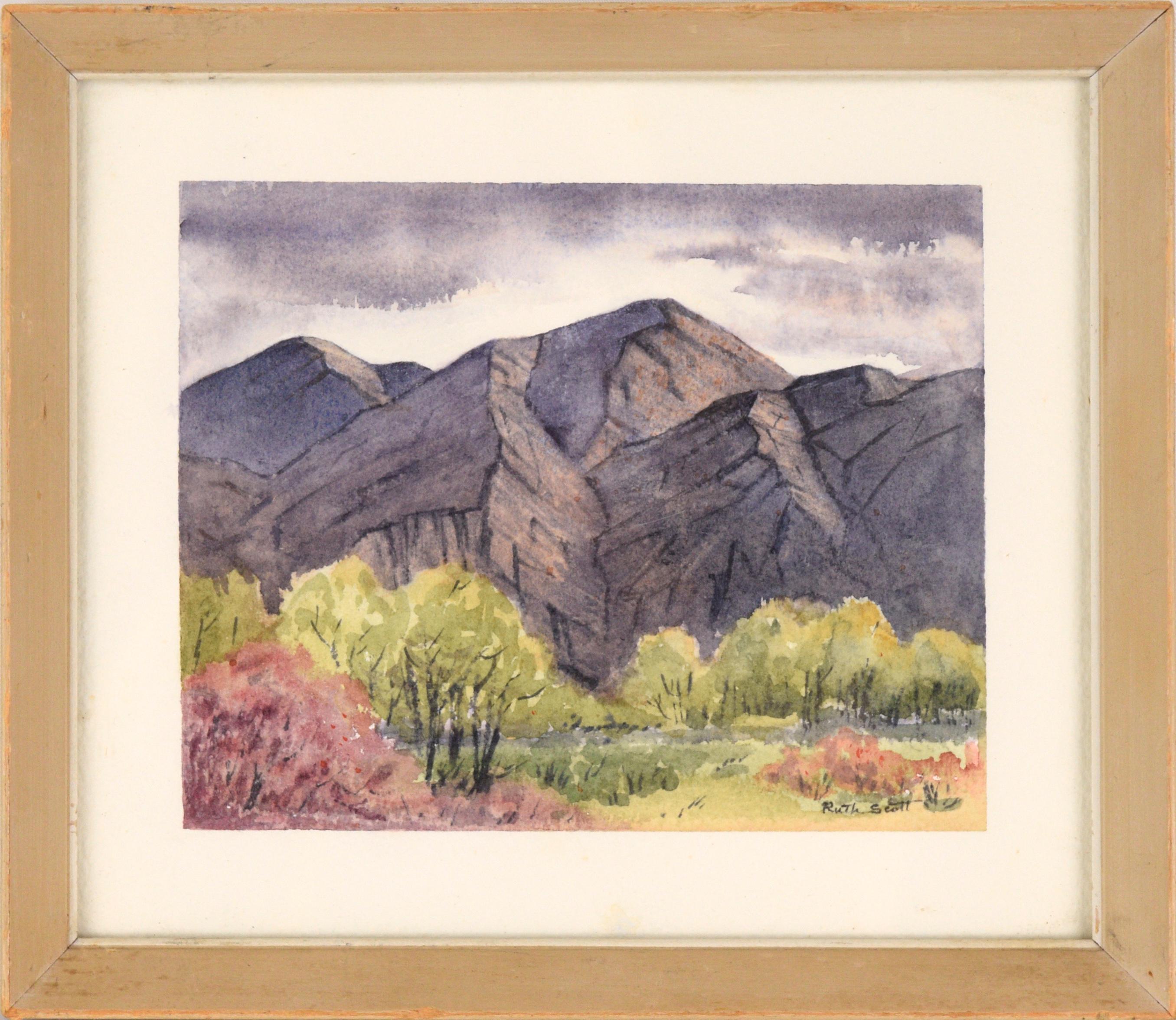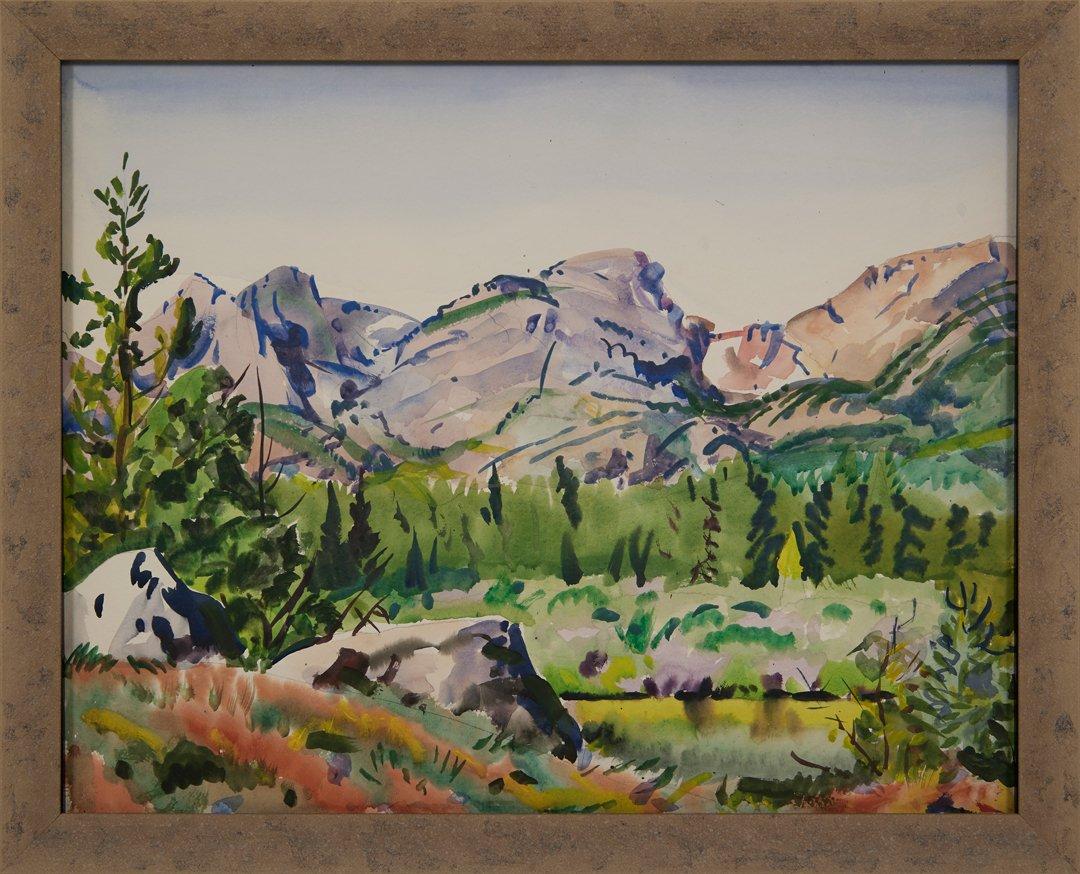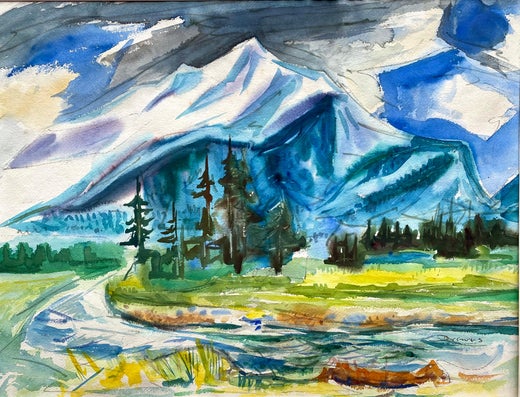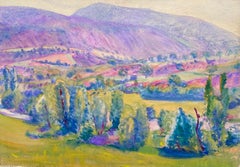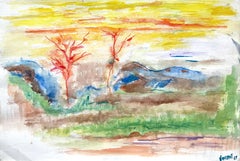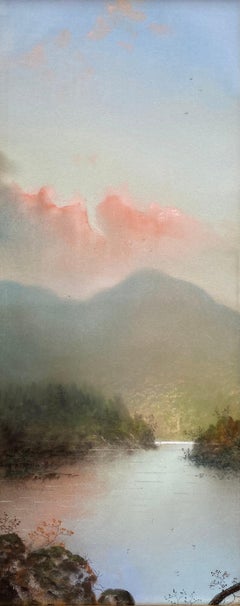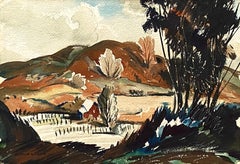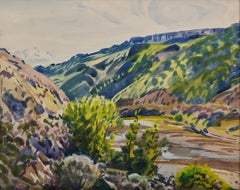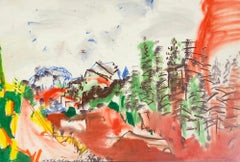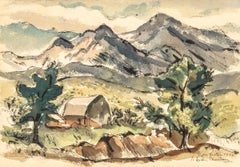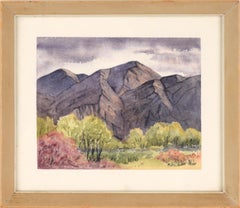Werner Drewes“Rocky Mountain Meadow”1956
1956
About the Item
- Creator:Werner Drewes (1899-1985, American)
- Creation Year:1956
- Dimensions:Height: 19.5 in (49.53 cm)Width: 25.75 in (65.41 cm)Depth: 1.5 in (3.81 cm)
- Medium:
- Movement & Style:
- Period:
- Condition:Possible foxing in several small spots in mountain. See last photo.
- Gallery Location:Southampton, NY
- Reference Number:1stDibs: LU14113157512
Werner Drewes
Werner Drewes was a painter, printmaker, and teacher, who was born in Canig, Germany, in 1899. His father, a Lutheran Minister, hoped he would become an architect, but Werner chose the life of an artist. After he served on the front line in France during the war, Werner was admitted to the Bauhaus in 1921, where he studied under Klee, Itten, and Muche. Later, he traveled through Europe to study such old masters as Tintoretto, Velasquez and El Greco. After marrying Margaret Schrobsdorff, they traveled throughout South America, North America and Asia. In 1930, Werner immigrated to New York City with his family. In New York City, despite the Depression, Werner joined other Bauhaus artists such as Piet Mondrian and Lyonel Feininger to make a living as an artist. This group became the core of the American Abstract Artists group. Werner taught at Columbia University, worked on the design of the 1939 World's Fair building, and had shows at the Museum of Modern Art, Kleeman Gallery, and elsewhere. In 1946, he accepted a tenured position at the Washington University in St. Louis. In his later years, he moved to Virginia and continued to show at galleries in Germany, Turkey, and in the United States. The Smithsonian held a show attributing his 65 years as a printmaker at the Museum for American Artists.
- ShippingRetrieving quote...Shipping from: Southampton, NY
- Return Policy
More From This Seller
View All1890s American Impressionist Landscape Drawings and Watercolors
Watercolor, Archival Paper
1960s Post-Modern Figurative Drawings and Watercolors
Watercolor, Archival Paper
1870s Hudson River School Landscape Drawings and Watercolors
Pastel, Archival Paper
1950s Modern Landscape Drawings and Watercolors
Watercolor, Archival Paper, Graphite
1920s Modern Landscape Drawings and Watercolors
India Ink, Archival Paper
1940s Abstract Expressionist Figurative Paintings
Canvas, Oil
You May Also Like
1950s American Modern Landscape Drawings and Watercolors
Watercolor
1950s Expressionist Landscape Drawings and Watercolors
Oil Pastel, Watercolor
1940s American Modern Landscape Drawings and Watercolors
Watercolor
Late 20th Century American Impressionist Landscape Drawings and Watercolors
Watercolor, Laid Paper
1950s Landscape Drawings and Watercolors
Watercolor
Mid-20th Century Post-Impressionist Landscape Paintings
Watercolor
